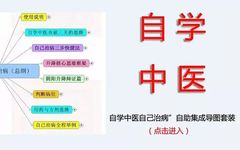
Identifying All Forms of Yang Deficiency
For individuals with Yang deficiency, Yin energy must naturally be abundant (the term Yin energy refers to the abundance of water, which is blood. When blood is abundant, Qi is weak, leading to Yang deficiency). Although all symptoms of fire may appear externally (this fire is termed “deficiency fire,” which is different from “excess fire.” Excess fire is caused by external pathogens entering the Yang channels, resulting from stagnation. Deficiency fire arises when Yin energy ascends, where Yin refers to water, and Qi refers to the innate Yang of water, hence it is called deficiency fire. Water Qi flows downward as normal, while upward movement is abnormal, resulting from the weakness of the governing fire, which cannot restrain and absorb, leading to ascension and illness), it is similar to excess fire, and should be differentiated using this method, ensuring no mistakes are made.
In cases of Yang deficiency, the individual will exhibit a pale, lifeless complexion, with blue-white lips, tired eyes, low voice, short breath, little energy, a heavy body, sensitivity to cold, expectoration of clear water, lack of appetite, a tongue that is blue and slippery, or black and moist with a pale yellow smooth color, excessive saliva, and a disinterest in drinking water, preferring hot soup instead. Bowel movements are frequent, the pulse is floating and weak, fine and without strength, with spontaneous sweating and cold limbs, blue nails, abdominal pain, and various symptoms, all of which are true manifestations of Yang deficiency. The treatment should focus on tonifying Yang and suppressing Yin (tonifying Yang includes upper, middle, and lower aspects, such as Gui Zhi (Cinnamon Twig), Ren Shen (Ginseng), and Huang Qi (Astragalus) for tonifying upper Yang; Jiang (Ginger), Cao Guo (Tsaoko Cardamom), and Xi Sha (Sand Ginger) for middle Yang; Tian Xiong (Aconite), Fu Zi (Prepared Aconite), and Liu Huang (Sulfur) for lower Yang). However, there are also cases resembling excess fire that need to be addressed. Yang deficiency symptoms may present with a red face resembling excess fire (indicating the externalization of original Yang, which can be confirmed by the above symptoms), a pulse that is extremely large and strong like a stone (indicating the violent loss of original Yang, which can also be confirmed by the above symptoms), and a body that feels very hot (this can occur in three scenarios: one is the externalization of original Yang, where the body does not feel pain or thirst, and there are no external pathogens to confirm; the second is postpartum blood deficiency, where Yang has no support; the third is bleeding that injures Yin, where original Qi has no support, leading to the expulsion of Qi and original Qi also being expelled). There may also be bleeding from the gaps between teeth (indicating that Yang Qi is insufficient to control blood, leading to excess blood that overflows), and symptoms of shortness of breath, cough, and phlegm (the lungs are the organ of clear deficiency, which cannot tolerate even a slight amount of Yin energy; now, the Yang of the heart and lungs is insufficient, hence it cannot control the ascending Yin energy. Yin energy refers to kidney water and kidney fire, indicating internal injury). There may also be difficulty with urination and defecation (indicating that Yang is insufficient to transform Yin, which can be confirmed by the above symptoms). This section briefly outlines a few points; further exploration of Yang deficiency through questions and answers will provide clarity.

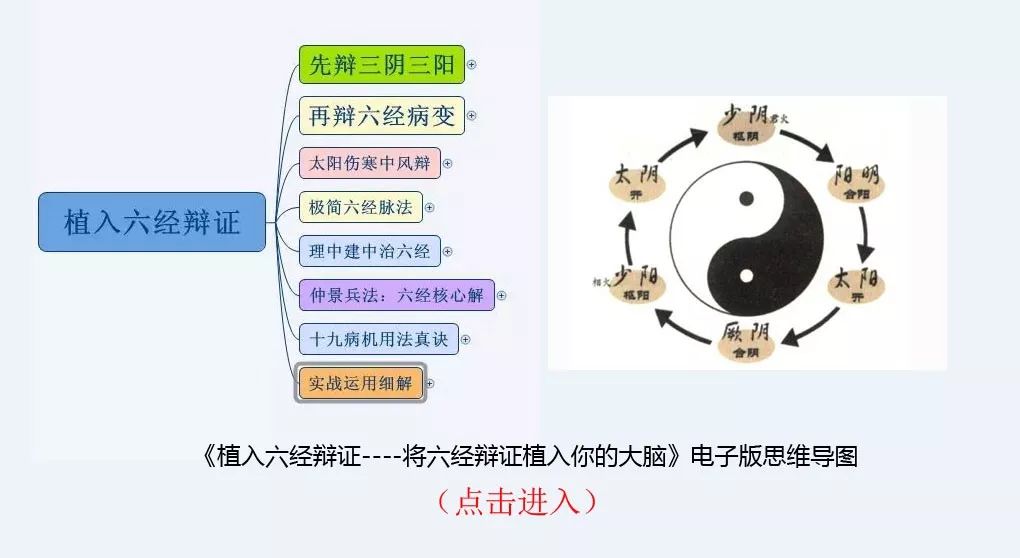
【Explanation】 Zheng states at the beginning of this book: “In medicine, it is not difficult to use medicine, but it is difficult to recognize symptoms; it is also not difficult to recognize symptoms, but it is difficult to understand Yin and Yang.” He also states: “Chen Xiuyuan’s medical books, thirteen in total, draw from the ancient to the present, discussing deeply and annotating lightly, capturing the subtleties of Zhang Zhongjing, and are quite enlightening. Among them, the division of Yin and Yang is based on practical evidence, and the lively application of medicine is sometimes briefly mentioned but not detailed.” Therefore, he wrote the two works “Medical Principles of True Transmission” and “Medical Methods of Round Communication.” In discussing the practical evidence of Yang deficiency and Yin deficiency, he elaborates on the wonderful methods of using formulas and applications, detailing dozens of points to clarify the painstaking efforts of Zhang Zhongjing in establishing laws and prescribing formulas, which also serves to supplement the shortcomings of Mr. Xiuyuan. Thus, his method of identifying all forms of Yin deficiency and Yang deficiency is a comprehensive and appropriate accumulation of the achievements of predecessors, combined with his own clinical experience over decades, making it quite comprehensive and practical. The Yang deficiency conditions mentioned in this section have been verified by the author over many years of clinical practice, and I am confident in their authenticity. For any of these conditions, using tonifying Yang and suppressing Yin medicines with adjustments and combinations will yield effective results. Any fire symptoms without these conditions are all excess fire. However, there are also Yang deficiency symptoms that resemble excess fire, such as the red face mentioned by Zheng; although all fire signs may appear externally, they should not be mistaken for excess fire and must be carefully differentiated. As long as there are identifiable Yang deficiency symptoms, tonifying Yang and suppressing Yin medicines should still be used for treatment.
Zheng mentions that Tian Xiong, Fu Zi, and Liu Huang tonify lower Yang, which have specific characteristics. Li Shizhen’s “Compendium of Materia Medica” states that Wu (Black Aconite), Fu (Prepared Aconite), and Tian Xiong are all medicines for tonifying the lower Jiao and Mingmen Yang deficiency, as they are of the same species but different names, sharing the same pungent and hot properties and being toxic, requiring preparation before use. Liu Huang is also very hot and pure Yang, capable of supplementing the true fire of Mingmen. Long Huitang’s “Chun Zi Yi” also states: “Liu Huang is originally the essence of fire, capable of clearing all damp-heat.” However, due to its sour taste and toxicity, it is generally used sparingly for internal use. Zhang Yanchun is known for its effective use, stating in his work “Medical Records of Chinese and Western Integration” that: “Over the past ten years, I have cured countless cases of chronic cold diseases using raw Liu Huang. Liu Huang is not toxic; its toxicity is its heat. Taking a small amount will not feel hot and will not harm the person, so it can be taken without preparation and can be taken regularly. Many people in the city take raw Liu Huang daily, all of whom have increased appetite and improved health, which I foolishly guided.” I also often use Liu Huang to treat patients with weakened Mingmen fire and chronic cold diseases, and it is particularly effective, but I do not use it raw; it must be prepared and then used in decoctions or pills. The method is to hollow out a radish, place Liu Huang inside, seal it, and boil it for two hours to remove the odor; or it can be boiled with tofu for two hours as well. A patient, Liu XX, who could not eat and vomited water, was diagnosed with cardia cancer and required surgical removal. I diagnosed it as a case of choking disease with obvious Yang deficiency symptoms and weakened Mingmen fire, so I used a modified version of Fu Zi Li Zhong Decoction, adding 20 to 30 grams of Liu Huang, and after three months of treatment, he was completely cured and has not relapsed for five years, which proves the efficacy of Liu Huang and its potential for broader application.
As for the bleeding from the gaps between teeth mentioned by Zheng, it is due to Yang deficiency being unable to control blood, leading to excess blood overflowing, which is also a confirmed observation. I often use the principle that “teeth belong to the kidneys” and apply Si Ni Decoction with Gui (Cinnamon) to treat such symptoms, achieving significant results.
For those with shortness of breath, cough, and phlegm, Zheng indicates that it is due to insufficient Yang of the heart and lungs, hence unable to control the ascending kidney water and fire, which is indeed a statement based on experience. For treating such conditions, as long as the expectorated phlegm is white and foamy or salivary, slightly salty, with shortness of breath, chills, I use Fu Zi Li Zhong Decoction with Sha Ren (Cardamom) and it always yields effective results. Regarding constipation, resembling sheep droppings, it is generally thought to be due to excess fire; Zheng points out that it is due to Yang not transforming Yin, which is also a form of Yin stagnation. I follow his principle and use Fu Zi Li Zhong Decoction combined with Ban Xia (Pinellia) pills, adding Rou Cong Rong (Cistanche), Ma Ren (Hemp Seed), and Xing Ren (Apricot Kernel) for effectiveness. Liu Huang is very hot and can supplement the true fire of Mingmen, promoting Yang Qi to clear the large intestine, and is also complemented by Ban Xia to descend turbidity. Therefore, Ban Xia pills have long been a good remedy for treating Yin stagnation.
Identifying All Forms of Yin Deficiency
For individuals with Yin deficiency, Yang energy must naturally be abundant (the term Yang energy refers to the abundance of fire. When fire is abundant, water is depleted, leading to Yin deficiency). Although all symptoms of Yin may appear externally, resembling Yang deficiency symptoms, they should be differentiated using this method, ensuring no mistakes are made. Yin deficiency symptoms include a red complexion, energetic appearance, wide-open eyes, insomnia, loud voice, foul breath, light body, sensitivity to heat, difficulty with urination and defecation, thirst for cold drinks, a tongue with dry yellow or black-yellow coating, and a complete lack of saliva, with prickly sensations in the mouth, irritability, or tidal fever with night sweats, dry cough without phlegm, and constant thirst. The six pulses are long, large, and strong, and various symptoms are true manifestations of Yin deficiency. The treatment should focus on nourishing Yin to break Yang (nourishing Yin includes all six Yin aspects, as discussed in the section on the rise and fall of Qi and blood, where excess Qi indicates a segment of fire, with various formulas for preserving, saving, transforming, and nurturing Yin). However, there are also cases resembling Yang deficiency with several indicators. Yin deficiency symptoms may present with a pulse that is hidden and not palpable, or fine like a thread, while if Yang deficiency is extreme (extreme heat leads to a hidden pulse, which can be confirmed by the above symptoms), there may be cold limbs like ice, while if Yang is completely absent (pathogenic heat is hidden internally, and Yang Qi does not reach the extremities, which can also be confirmed by the above symptoms), there may be sudden vomiting and diarrhea, profuse sweating like Yang collapse (this heat is hidden internally, forcing out vomiting and diarrhea, which can also be confirmed by the above symptoms), and an inability to speak. This section only briefly outlines a few points; further exploration of Yin deficiency through questions and answers will provide clarity.
According to Yin deficiency symptoms, they are all due to excess fire (fire is Qi), and excess fire injures blood, which is an unchanging principle throughout the ages. Later scholars focused solely on fire, obscuring the true nature of Yin deficiency symptoms. Zhang Zhongjing’s methods for preserving, transforming, nurturing, and saving Yin have all been abandoned, and no one recognizes them now, hence this special evidence.
【Explanation】 Individuals with Yin deficiency, due to excess Qi, have abundant fire, hence often experience water depletion and blood deficiency. The symptoms they present are often opposite to those of Yang deficiency. Individuals with Yang deficiency, due to insufficient Qi, cannot control blood, leading to blood flow stagnation and slow movement, with body temperature often being low. Individuals with Yin deficiency, with water depletion and fire abundance, hence body temperature is often high with various fever phenomena. In clinical practice, whenever Yin deficiency symptoms are identified, the treatment should focus on nourishing Yin to suppress Yang. Although all Yin signs may appear externally, resembling Yang deficiency, as Zheng mentioned, as long as there are various symptoms of Yin deficiency, treatment should still be based on Yin deficiency principles.
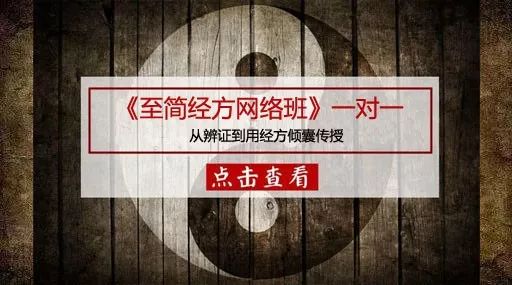
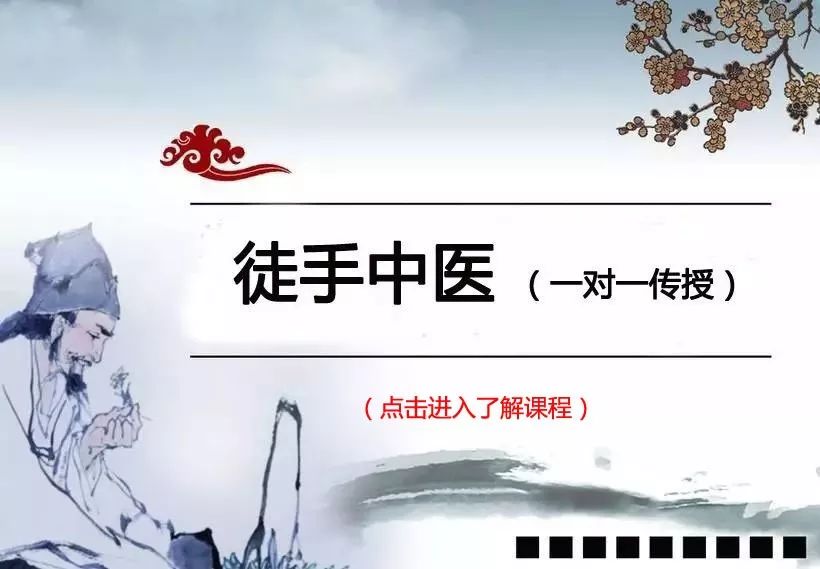
Appendix: 17 Points of Yin-Yang Differentiation
(1) Yin Syndrome
Any syndrome that conforms to the general attributes of “Yin” is termed a Yin syndrome. For example, interior syndromes, cold syndromes, and deficiency syndromes generally fall within the scope of Yin syndromes.
【Clinical Manifestations】 Generally, all interior cold deficiency syndromes belong to Yin syndromes. Patients may face the wall quietly, close their eyes and dislike brightness (preferring darkness and drowsiness, not wanting to see people), curl up, feel heavy, have a pale or dark complexion, or cyanosis, fatigue, shallow breathing, quiet demeanor, low and timid voice, lethargy, mental confusion, or coma, grasping at empty air, feeling for clothes or the bed, or preferring warmth, with a bland mouth and no thirst, feeling cold, with cold hands and feet, dry skin, clear and long urination, loose stools, a pulse that is deep and slow or weak or thin and rough, a pale and plump tongue, and a white and slippery coating. Any disease affecting the blood or organs also falls within the scope of Yin syndromes.
【Syndrome Analysis】 Mental lethargy, fatigue, and low voice are manifestations of deficiency syndromes. Cold limbs, clear and long urination, and loose stools are manifestations of interior cold. A pale and plump tongue, deep and slow pulse, weak, thin, and rough pulse are all signs of deficiency cold in the tongue and pulse.
(2) Yang Syndrome
Any syndrome that conforms to the general attributes of “Yang” is termed a Yang syndrome. For example, exterior syndromes, heat syndromes, and excess syndromes generally fall within the scope of Yang syndromes.
【Clinical Manifestations】 Generally, all exterior heat excess syndromes belong to Yang syndromes. Yang syndrome patients may lie facing outward, open their eyes and enjoy seeing people (with some exceptions for those who are sensitive to light), stretch their bodies, feel light, have a red complexion, flushed face, bright eyes, dislike cold and feel hot, with hot skin, dry mouth and throat, thirst for cold drinks, restlessness and insomnia, irritability, agitation, incoherent speech, loud and coarse voice, deep and long breaths, shortness of breath with phlegm, clear and strong voice, warm body and hands, moist skin, constipation with foul odor, painful and burning urination, and a pulse that is floating, rapid, or strong and forceful, with a red tongue and yellow thick dry or scorched black coating. Any disease affecting the Qi aspect (or Wei aspect) or affecting the bowels also falls within the scope of Yang syndromes.
【Syndrome Analysis】 Yang syndrome is a summary of exterior syndromes, heat syndromes, and excess syndromes. The simultaneous presence of chills and fever indicates the characteristics of exterior syndromes. A red complexion, irritability, hot skin, dry mouth, and thirst for cold drinks are manifestations of heat syndromes. A loud and coarse voice, deep breaths, shortness of breath with phlegm, and constipation are also manifestations of excess syndromes. A red tongue, yellow thick coating, and a rapid, strong pulse are all signs of excess heat.
(3) Differentiation between Yin and Yang Syndromes
[Reprinted] TCM Differentiation: Yin-Yang Differentiation
The growth and decline of Yin and Yang are relative; when Yang is strong, Yin declines, and when Yin is strong, Yang declines. For example, if the pulse is large and strong, the tongue is red with a dry coating, and there are accompanying symptoms of thirst and fever, it indicates that Yang is strong and Yin is weak. Conversely, if the pulse is deep and slow, the tongue is white with a moist coating, and there are accompanying symptoms of abdominal pain and diarrhea, it indicates that Yin is strong and Yang is weak. Additionally, the complex changes of Yin and Yang are specifically manifested in the six categories of cold, heat, deficiency, and excess. Yin deficiency syndrome is also called deficiency heat syndrome, while Yang deficiency syndrome is also called deficiency cold syndrome. The kidneys are the root of Yin and Yang in the human body; when Yin and Yang have been deficient for a long time, or due to prolonged illness, it can damage kidney Yin or Yang, leading to true Yin deficiency or true Yang deficiency syndromes, which are true Yin deficiency and true Yang deficiency.
The “Medical Mirror of Gu Songyuan” discusses the differentiation of Yin and Yang diseases, mentioning the division of day and night severity, which can also serve as a reference. It states: “Yang diseases are heavier during the day and lighter at night, as Yang Qi and pathogenic Qi are both strong; Yin diseases are lighter during the day and heavier at night, as Yin Qi and pathogenic Qi are both strong. If Yang deficiency disease is lighter during the day, Yin deficiency disease is lighter at night, with Yin and Yang each returning to their respective states. This also indicates their changes; those treating should determine the timing to confirm the disease. If it has not yet manifested, it should be welcomed and guarded (treating according to the flow of Yin and Yang). If it is in the acute phase, it should be avoided; if it has already caused harm, it should be countered. Whether during the day or night, if it occurs intermittently, it is purely a deficiency syndrome, and should not be restricted to day and night. Instead, one should take nourishing medicines broadly to support the righteous Qi.”
(4) True Yin Deficiency (Kidney Yin Deficiency)
True Yin deficiency refers to the deficiency of true Yin in the kidneys, often caused by chronic consumptive diseases such as pulmonary tuberculosis, leading to deficiency heat, which belongs to this type.
【Clinical Manifestations】 Symptoms include fiery inflammation, pale complexion with red cheeks, lips resembling red paint, five hearts feeling hot, dizziness, tinnitus, dry mouth and throat, hot palms and feet, dizziness and blurred vision, weakness in the lower back and knees, bone steaming with night sweats, nightmares, nocturnal emissions, constipation, and short urination, with a pulse that is thin and rapid, and a tongue that is red, dry, and with little coating.
【Syndrome Analysis】 With prolonged illness, Yin essence is damaged, affecting true Yin, leading to Yang not being controlled, resulting in deficiency heat symptoms, hence the appearance of pale complexion with red cheeks, red lips, dry mouth, five hearts feeling hot, night sweats, constipation, and short urination, with a red, dry tongue and thin, rapid pulse. Additionally, as the illness has damaged kidney Yin, symptoms of kidney dysfunction may also appear. For example, the kidney governs marrow and bones, so dysfunction may lead to dizziness, blurred vision, and weakness in the lower back and legs. The kidney governs reproduction, so deficiency heat may disturb the essence, leading to nocturnal emissions.


(5) True Yang Deficiency (Kidney Yang Deficiency)
True Yang deficiency refers to the deficiency of true Yang in the kidneys, where Yang is insufficient to support Yin, often seen in various diseases with declining bodily functions and reduced basal metabolism, especially in the elderly and weak individuals.
【Clinical Manifestations】 Symptoms include a pale complexion, cold limbs, fatigue, preference for lying down, cough with shortness of breath and swelling, pale lips and tongue, bland mouth with excessive saliva, cough and swelling, spontaneous sweating, dizziness, lack of appetite, abdominal distension, and swelling of the lower limbs, with loose stools or early morning diarrhea, poor digestion, impotence, nocturnal emissions, early ejaculation, cold semen leading to infertility, or cold womb leading to infertility, with a pale, moist, or plump tongue, white slippery coating, and a pulse that is deep and slow or weak at the right wrist.
【Syndrome Analysis】 With prolonged illness, Yang Qi is damaged, affecting true Yang, leading to insufficient Yang to control Yin, resulting in internal cold symptoms, hence the appearance of pale complexion, cold limbs, pale lips and tongue, bland mouth with excessive saliva, spontaneous sweating, lack of appetite, pale plump tongue, white slippery coating, and deep, slow, weak pulse. Additionally, as the illness has damaged kidney Yang, symptoms of kidney dysfunction may also appear. For example, the kidney governs the intake of Qi and water, so dysfunction may lead to cough and swelling, abdominal distension, and swelling of the lower limbs. The kidney governs reproductive functions, so Yang deficiency may lead to impotence, early ejaculation, cold semen leading to infertility, and Yang deficiency affecting the two excretions may lead to early morning diarrhea.
(6) Loss of Yin
Loss of Yin refers to the significant loss of body fluids, resulting in the depletion of Yin fluids. Loss of Yin is a type of deficiency heat syndrome.
【Clinical Manifestations】 Symptoms include profuse sweating, shortness of breath, sensitivity to heat, warm hands and feet, restlessness or confusion, thirst and dry throat, dry lips and tongue, wrinkled skin, sunken eye sockets, cracked lips and tongue, scanty or absent urination, thirst for cold drinks, red and dry tongue, and thin, rapid pulse.
【Syndrome Analysis】 The depletion of Yin fluids leads to a loss of moistening function, hence the symptoms of thirst and dry throat, dry lips and tongue, and wrinkled skin. The depletion of fluids leads to scanty urination. Deficiency of Yin leads to internal heat, hence the warm body and warm limbs. If deficiency heat ascends, it leads to restlessness. A red, dry tongue and thin, rapid pulse indicate the signs of dry heat due to fluid depletion. Profuse sweating often occurs in patients with original heat diseases, where heat pathogens force fluids to leak out. It can also occur in patients with improper treatment, leading to excessive sweating. At this time, profuse sweating is both a cause and a symptom of loss of Yin.
(7) Loss of Yang
Loss of Yang refers to a type of deficiency cold syndrome where Yang deficiency leads to cold symptoms. The body’s functional activity is significantly reduced.
【Clinical Manifestations】 Symptoms include profuse sweating, pale complexion, mental lethargy, cold limbs, sensitivity to cold, preference for curling up, thirst for hot drinks, bland taste, weak breath, pale and moist tongue, and a pulse that is weak or floating and empty.
【Syndrome Analysis】 Loss of Yang occurs in various conditions leading to Yang Qi weakness and potential loss. Yang deficiency cannot control fluids, hence the pores open and lead to profuse sweating, which is cold and bland. Yang deficiency leads to cold symptoms, hence the body feels cold, and the limbs are cold.
(8) Differentiation between Loss of Yin and Loss of Yang
Loss of Yin and Loss of Yang are dangerous syndromes of disease; a slight misdiagnosis or delayed treatment can lead to immediate death.
Loss of Yin and Loss of Yang refer to the rapid loss of the material basis of life activities and the decline of functional capacity.
Both Loss of Yin and Loss of Yang are caused by high fever, profuse sweating, severe vomiting and diarrhea, excessive blood loss, severe dehydration, collapse, shock, or treatment errors.
Loss of Yin and Loss of Yang are two different types of syndromes; the fundamental cause of Loss of Yin is the significant loss of body fluids, leading to Loss of Yin. The main cause of Loss of Yang is the loss of Yang Qi. Since Qi can be lost with fluids and blood, Loss of Yang often occurs after excessive sweating, vomiting, diarrhea, or severe bleeding. Additionally, many diseases can present Loss of Yang in critical stages.
Yin and Yang are opposites that are interdependent; when Yin is depleted, Yang Qi will have no support and will disperse, and when Yang is lost, Yin fluids will have no means of transformation and will be exhausted. Therefore, Loss of Yin can quickly lead to Loss of Yang, and Loss of Yang often follows Loss of Yin. The two are only different in priority and sequence, with no clear boundary. In clinical practice, it is important to differentiate the priority of Loss of Yin and Loss of Yang and provide timely treatment.
[Reprinted] TCM Differentiation: Yin-Yang Differentiation
(9) Excess Yang
Excess Yang refers to a pathological state where Zheng Qi is strong and Xie Qi is abundant, indicating a functional disorder. Excess Yang indicates a pathological state where the Zheng Qi has not declined, Yang Qi is relatively abundant, and the functions are hyperactive, leading to excess heat. The formation of Excess Yang is often due to the invasion of heat pathogens or other pathogens, resulting in Yang transforming into heat; it can also arise from pathological hyperactivity of the body’s functions. Additionally, long-term consumption of spicy, fatty foods or excessive or improper use of warming and Yang-tonifying substances can also lead to this condition. The main manifestations include strong heat, irritability, loud voice, red complexion, thirst, dry stools, scanty and painful urination, a rapid and strong pulse, and a red tongue with a yellow coating.
(10) Excess Yin
Excess Yin, habitually referred to as Yin predominance or Yin excess, indicates a pathological state where Zheng Qi has not declined, but Yin Qi is relatively abundant, characterized by functional disorders or imbalances, and insufficient heat. The formation of Excess Yin is often due to the invasion of cold pathogens, excessive consumption of raw and cold foods, or dysfunction and imbalance of internal organs, leading to an excess of Yin Qi that suppresses Yang Qi. The main manifestations include cold limbs, sensitivity to cold, abdominal pain, diarrhea, edema, preference for warmth, little movement, bland mouth, and no thirst, clear and thin phlegm, pale tongue with white coating, and a slow pulse.
(11) Yang Deficiency
Yang deficiency refers to the deficiency of Yang Qi in the body, leading to reduced functions and insufficient heat, manifesting as a pathological state of deficiency cold. “Yang deficiency leads to external cold” refers to this condition. The formation of Yang deficiency is often due to insufficient congenital endowment, lack of nourishment in later life, overwork, or excessive use of cold-clearing and Yang-reducing formulas. Clinical manifestations include a pale complexion, cold hands and feet, easy sweating, loose stools, clear urination, pale lips, bland mouth, pale tongue, white slippery coating, and weak pulse. Additionally, TCM refers to “Yin Collapse.” Collapse refers to cold limbs that are not warm. Internal organs are deficient and cold, and Yang Qi cannot reach the extremities, leading to coldness, which is termed Yin Collapse. Yin Collapse actually refers to a more severe Yang deficiency, particularly in the hands and feet.
(12) Yin Deficiency
Yin deficiency refers to the depletion of Yin fluids and their functional decline, leading to an inability of Yin to control Yang, resulting in a pathological state of deficiency heat, termed “Yin deficiency leads to internal heat.” The formation of Yin deficiency is often due to heat pathogens injuring Yin, excessive emotional stress leading to heat damaging Yin, prolonged illness depleting Yin fluids, and insufficient nourishment over time. Clinical manifestations include “five hearts feeling hot,” afternoon tidal fever, night sweats, red lips and dry mouth, tender red tongue or crimson tongue, dry without coating, constipation, and yellow short urination, with a thin and rapid pulse.
(13) Yang Excess with Yin Deficiency
In clinical practice, Yang excess, Yin excess, Yang deficiency, and Yin deficiency often do not exist in isolation. Since Yin and Yang are interdependent, if one side is excessively strong, it will inevitably affect the other side, leading to varying degrees of damage. For example, Yang excess can damage Yin, and Yin excess can damage Yang. The “Suwen: Discussion on Yin and Yang Correspondences” states, “When Yin is strong, Yang is sick; when Yang is strong, Yin is sick,” which refers to this situation. In a state of Yang excess, the intense Yang Qi will inevitably cause varying degrees of damage to Yin fluids. When the damage is slight and the symptoms are not obvious, the essence of the disease remains Yang excess; when the damage is severe and the symptoms are obvious, presenting with dry mouth, irritability, scanty and painful urination, dry stools, dry skin, and decreased elasticity, it indicates a transition to Yang excess with Yin deficiency, where the essence of the disease is excess with a mix of deficiency.
(14) Yin Deficiency with Yang Excess
Habitually referred to as Yin deficiency with Yang hyperactivity, Yang hyperactivity is synonymous with Yang excess. To standardize the diagnostic terminology, we will refer to Yang hyperactivity as Yang excess. Yin deficiency with Yang excess and Yang excess with Yin deficiency are two syndromes with similar clinical manifestations but different pathogenesis. Yang excess with Yin deficiency occurs first with Yang excess, leading to Yin deficiency due to the consumption of Yin fluids; Yin deficiency with Yang excess occurs first with the deficiency of essence or fluids, leading to the hyperactivity of Yang Qi due to the loss of Yin fluids. Yin deficiency can lead to the hyperactivity of Yang Qi, while Yang excess can damage Yin fluids, exacerbating Yin deficiency, creating a reciprocal relationship. Clinical manifestations include tidal fever, night sweats, five hearts feeling hot, coughing blood, weight loss, insomnia, irritability, or nocturnal emissions, increased sexual desire, a red and dry tongue, and a thin and rapid pulse. There is also Yin deficiency with Yang floating, indicating true Yin deficiency and depletion of fluids and blood, leading to the floating of Yang Qi. The main manifestations include dizziness, flushed face, red eyes, dry throat, sore throat, and toothache. Yin deficiency with Yang floating and Yin deficiency with Yang excess are similar, but the symptoms are concentrated in the upper Jiao.
(15) Yin Excess with Yang Deficiency
When Yin fluids are excessively abundant, they will inevitably cause varying degrees of damage to Yang Qi. When Yang damage is slight and the symptoms are not obvious, the essence of the disease remains Yin excess with cold; when Yang damage is severe and the symptoms are obvious, presenting with cold sensitivity, pale complexion, clear and long urination, and loose stools, it indicates Yang deficiency, resulting from the primary cold with secondary Yang damage, where the essence of the disease transitions to Yin excess with Yang deficiency, characterized by excess cold with a mix of Yang deficiency.

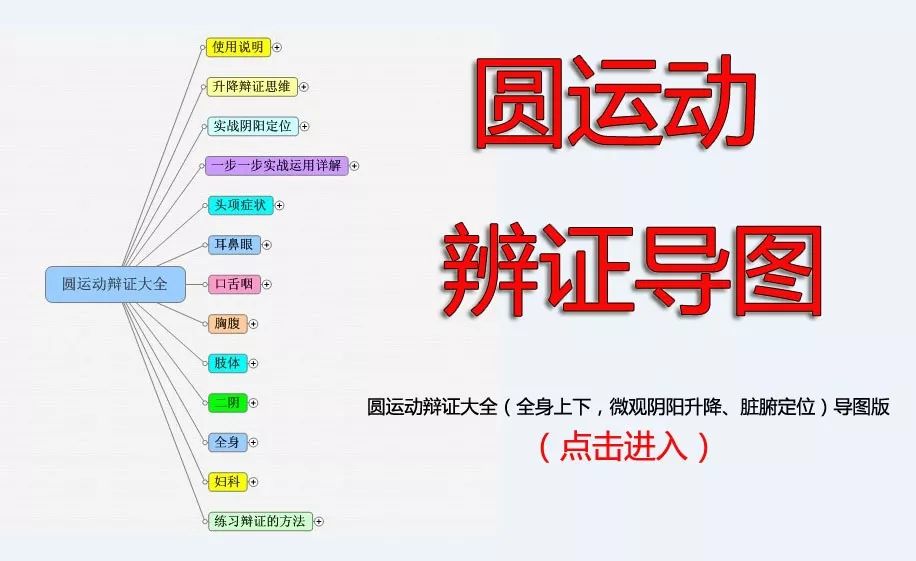
(16) Both Yin and Yang Deficiency
Both Yin and Yang deficiency is the result of mutual damage between Yin and Yang. When either Yin fluids or Yang Qi are deficient to a certain extent, it will affect the other, leading to the pathological changes of both Yin and Yang deficiency. Mutual damage occurs on the basis of either Yin deficiency or Yang deficiency, further developing into both deficiencies. Since the kidneys are the “home of water and fire,” housing both original Yin and original Yang, they are the root of Yin and Yang for all organs. Therefore, any deficiency of Yin or Yang in any organ will inevitably affect kidney Yin or Yang; when kidney Yin or Yang is deficient to a certain extent, it will also affect the other, resulting in both Yin and Yang deficiency. Clinically, there are two situations of both Yin and Yang deficiency:
The first is a predominance of Yang deficiency in both Yin and Yang deficiency. This occurs when Yang Qi is more severely deficient, affecting Yin fluids, leading to insufficiency. The main characteristics are the simultaneous presence of deficiency cold and deficiency heat, with deficiency cold being predominant and deficiency heat being secondary.
The second is a predominance of Yin deficiency in both Yin and Yang deficiency. This occurs when Yin fluids are more severely deficient, affecting Yang Qi, leading to insufficiency. The characteristics are the simultaneous presence of deficiency cold and deficiency heat, with deficiency heat being predominant and deficiency cold being secondary.
(17) Separation of Yin and Yang
Separation of Yin and Yang, also known as Yin depletion and Yang collapse, refers to a severe stage of disease where Yin and Yang can no longer support each other, leading to disintegration. When clinical symptoms of severe loss of Yin, such as massive bleeding, severe vomiting and diarrhea, and high fever appear, Yin fluids have already been depleted, and Yang Qi may collapse at any time; internal injuries from various diseases, such as heart Yin deficiency, can also lead to Yang Qi collapse. Separation of Yin and Yang is the most severe imbalance of Yin and Yang and the final stage, representing a critical mechanism of life-threatening conditions and death. Additionally, it is important to note that in traditional TCM theory, the frequently discussed Yin syndrome and Yang syndrome. In the previous section, we have commented on this: it is impossible to use Yin and Yang syndromes to encompass all diseases; the specific meanings of Yin syndrome and Yang syndrome refer to deficiency cold syndrome and excess heat syndrome, respectively. In conjunction with the differentiation of Yin and Yang in terms of disease location, it is more accurate to say that Yin syndrome refers to Yang deficiency with cold, while Yang syndrome refers to excess Yang with heat.
Recommended Purchase of Related Books:
(Reprint Statement: This article is reprinted from the internet, and the copyright belongs to the original author. If there is any infringement, please contact us for deletion!)
Original Article Extended Reading:
Six Meridians and Six Major Disease Locations—Three Yin Cold Evil Disease Locations! (Understanding the Last Article on Cold Damage) —> Click to Read
Six Meridians and Six Major Disease Locations—Shaoyang Meridian Disease Locations! (A Small Chaihu Decoction Dominates) —> Click to Read
Six Meridians and Six Major Disease Locations—Yangming Meridian Disease Locations! (Crucial for Treating Damp-Heat) —> Click to Read
Six Meridians and Six Major Disease Locations—Taiyang Meridian Disease Locations! (This Article Understands the Taiyang Meridian) —> Click to Read
Six Meridians and Six Layers of Vital Energy Recovery! (Complete Explanation of Self-Healing Energy) —> Click to Read
Comprehensive Explanation of Cervical Spondylosis! (Classical Treatment Methods + Secret External Treatments) —> Click to Read
Comprehensive Explanation of Toothache! (Cold Damage Thinking, Disease Mechanism Differentiation, Classical Formula and Medicinal Symbols) —> Click to Read Comprehensive Explanation of Insomnia! (Disease Mechanism Differentiation + Core Ideas for Stabilizing Yang) —> Click to Read Comprehensive Explanation of Fever! (Disease Mechanism Differentiation of Cold Damage Thinking, Internal and External Treatment Methods) —> Click to Read
Comprehensive Explanation of Headache! (Learning the Key Points of Differentiation) —> Click to Read
For more exclusive TCM secrets, scan the QR code below to follow our public account:

TCM Internal Treatment Course:
“Simplified Classical Formula Online Class” one-on-one, from differentiation to using classical formulas, imparting knowledge generously!!! (Click to Enter)
TCM External Treatment Course:
“Hands-On TCM” can treat diseases without any prior knowledge!!! (One-on-one teaching) (Click to Enter)
TCM Learning Mind Map Series:
“Embedding Six Meridians Differentiation”—- Embed Six Meridians Differentiation into Your Brain” electronic version mind map (Click to Enter)
Self-learning TCM to Treat Diseases” Self-Help Integrated Mind Map Set (Click to Enter)
Yin-Yang Unified Treatment Method (Returning Complex TCM to the Unified Path of Yin and Yang) (Click to Enter)
Comprehensive Dialectical Map of Circular Motion (All over the body, micro Yin and Yang rise and fall, organ positioning) (Click to Enter)
If this article has helped you
Please scan to reward, as you wish




